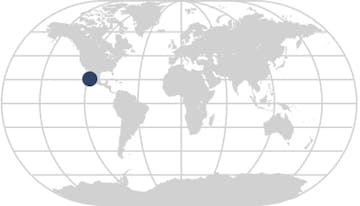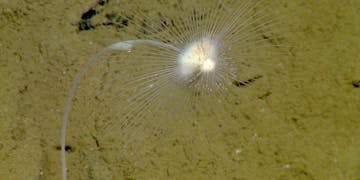
The delicate sponge pictured above was named Cladorhiza mexicana because it was discovered in Mexican territorial waters near the entrance to the Gulf of California.

Researchers named this delicate sponge Cladorhiza mexicana because it was discovered in Mexican territorial waters near the entrance to the Gulf of California. Cladorhiza mexicana measure 30 centimeters in total length and the diameter of the “parasol,” including filaments, is just under seven centimeters.

The delicate sponge pictured above was named Cladorhiza mexicana because it was discovered in Mexican territorial waters near the entrance to the Gulf of California.
An unusual mud volcano, emanating bursts of gas, is caught on video during a research expedition off the coast of Taiwan.